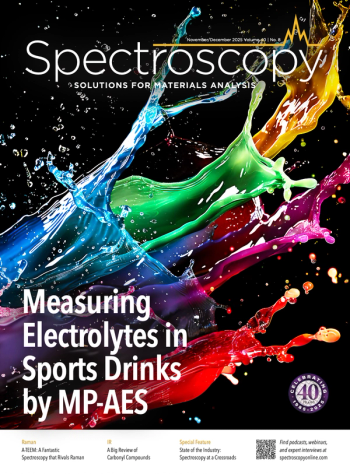
Spectral Analysis Technique Reveals Insights into Soil Organic Matter
A spectral analysis technique was used to classify soil samples based on their soil organic matter (SOM).
In a recent study published in Applied Spectroscopy, a research team from University of Novi Sad and the Research Centre for Sensing Technologies tested a novel approach to classify soil samples based on different fractions of soil organic matter (SOM) (1).
The researchers developed model systems that chemically mimics the ratios of SOM fractions. They used a combination of starch and nicotinamide to represent labile organic matter, and humic acid as the standard for stable organic matter. The team then used spectral analysis techniques to determine the most significant wavelengths for classifying these soil fractions (1).
By applying a permutation importance algorithm to both training models and test data sets, the research identified specific wavelengths and their corresponding importance scores (1). Three prominent regions emerged for the classification of soil fractions within the estimated probability density function. These regions are 800–1200 cm–1 with an importance score of 0.48–0.55, 1800–2000 cm–1 with an importance score of 0.52–0.62, and 2500–3200 cm–1 with an importance score of 0.48–0.62 (1).
In this context, the first component represents the spectral range, whereas the second component encompasses the importance score. These obtained wavelength ranges underscore the significance of the aliphatic stretching and bending vibration region, as well as the total soil reflectance (mineral content) for characterizing organic matter fractions within soil samples (1).
One of the most interesting aspects of this research is its potential application in the field of remote sensing. A comparative evaluation with existing literature data suggests that these wavelengths hold promise for the development of new sensors for Advanced Spaceborne Thermal Emission and Reflection Radiometer (ASTER) satellites, particularly within the shortwave infrared and thermal infrared ranges (1).
The research conducted in this study not only provides insights into soil organic matter classification, but it also has broader implications for agricultural and environmental studies. With the potential use of these wavelengths in satellite-based sensors, our ability to monitor and manage soil quality is improved, aiding in sustainable agriculture practices and environmental conservation (1).
Soil conservation is an important aspect to environmental monitoring and agriculture. Ensuring optimal soil composition is integral for essential for agriculture to thrive. The spectral analysis technique demonstrated in this study not only deepens our understanding of soil composition, but it also offers practical applications in soil management and environmental conservation.
This article was written with the help of artificial intelligence and has been edited to ensure accuracy and clarity. You can read more about our
Reference
(1) Jovic, B.; Panic, M.; Pavlovic, A.; Kordic, B.; Ciric, V.Mid-Infrared Variable Selection for Soil Organic Matter Fractions Based on Soil Model Systems and Permutation Importance Algorithm. Appl. Spectrosc. 2023, ASAP. DOI:
Newsletter
Get essential updates on the latest spectroscopy technologies, regulatory standards, and best practices—subscribe today to Spectroscopy.


